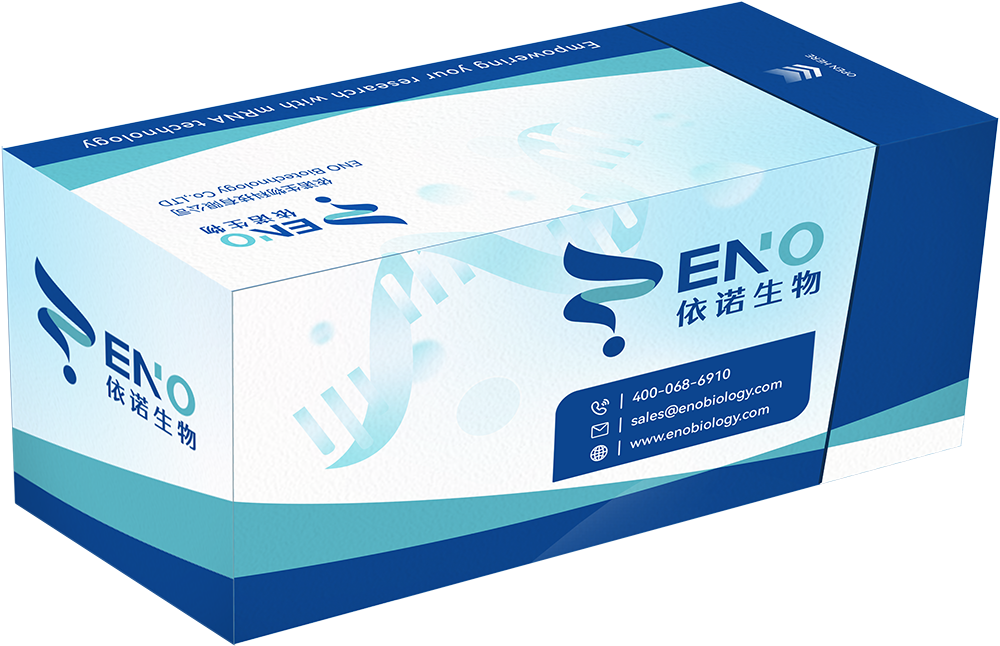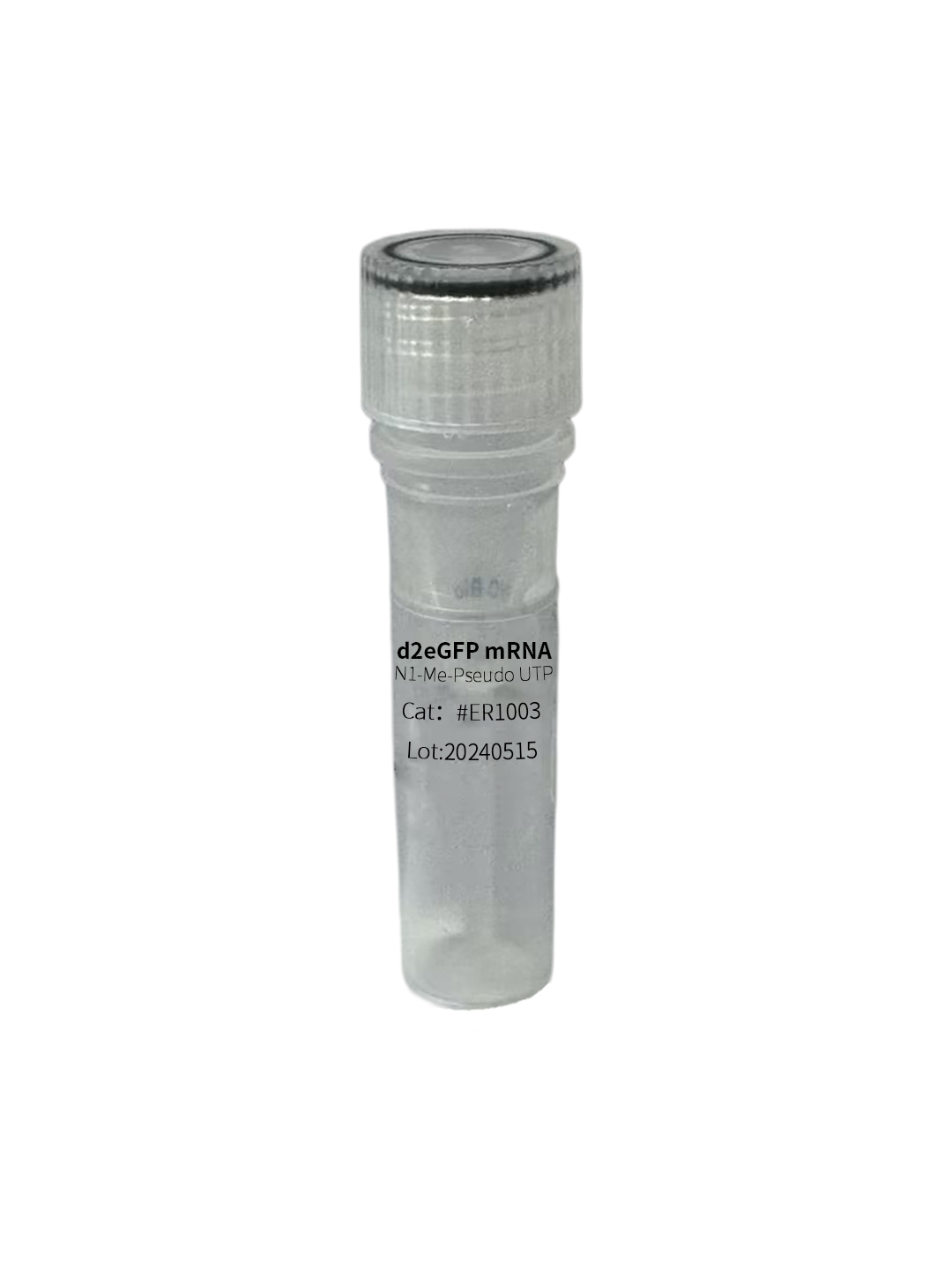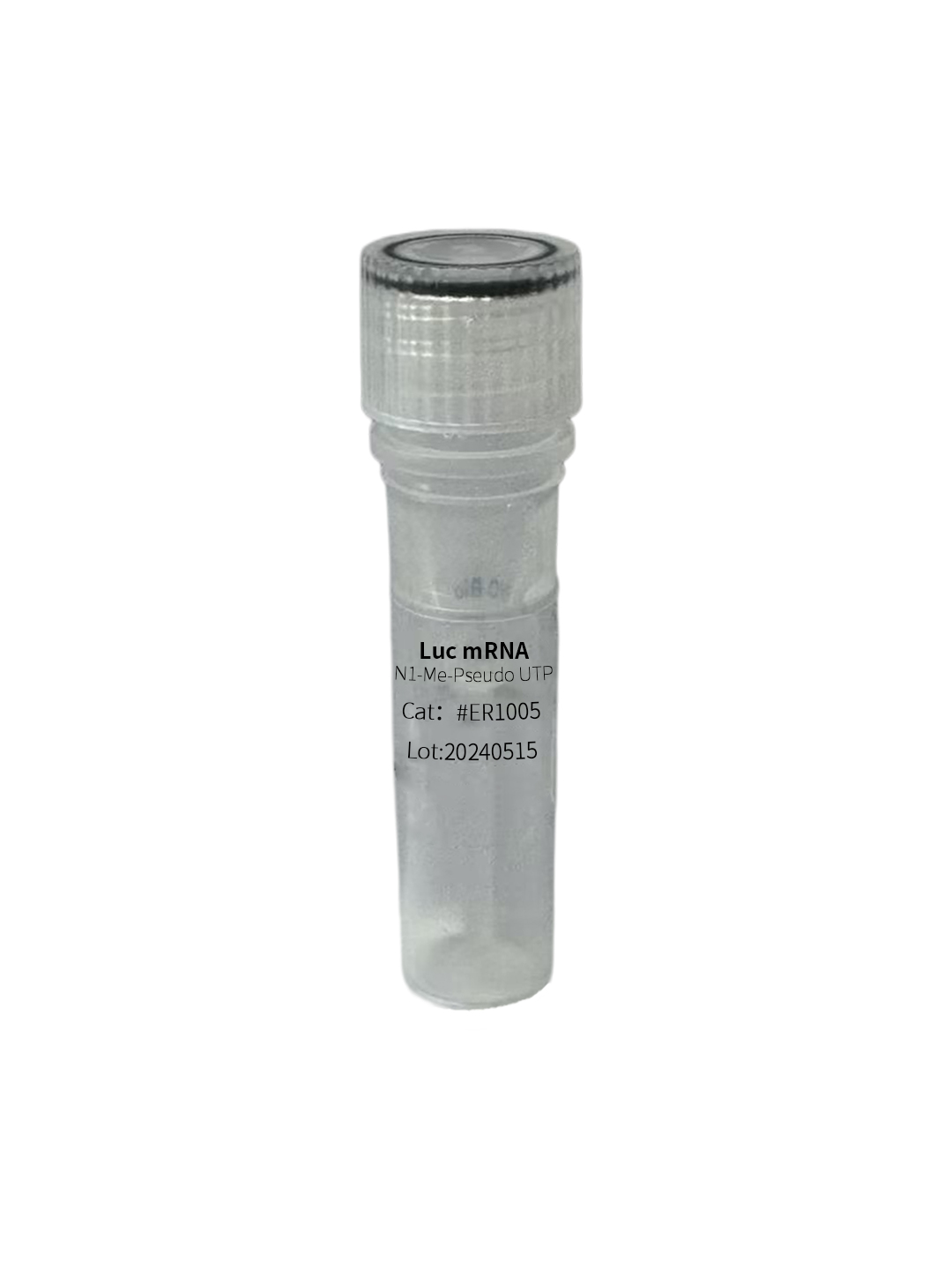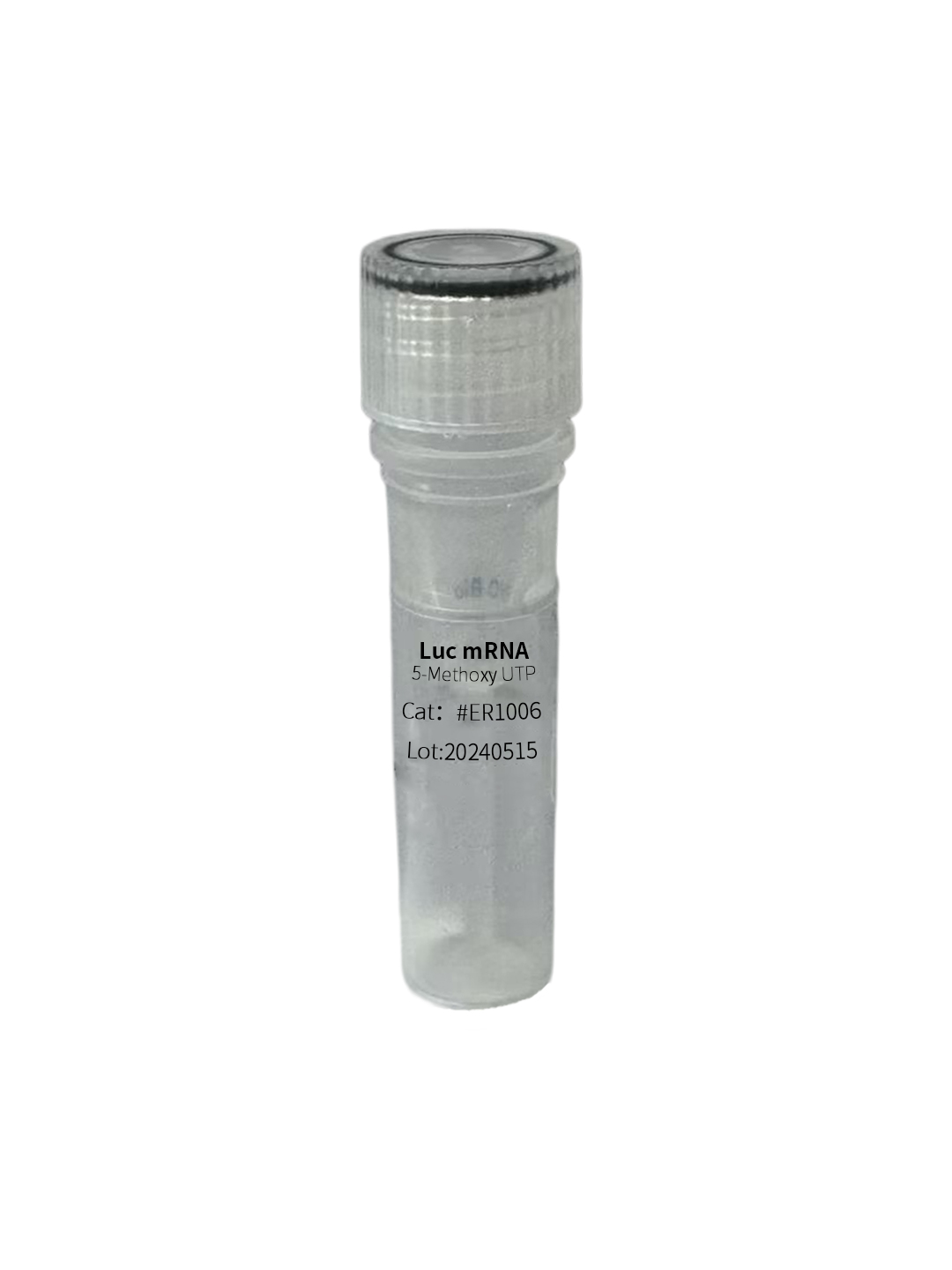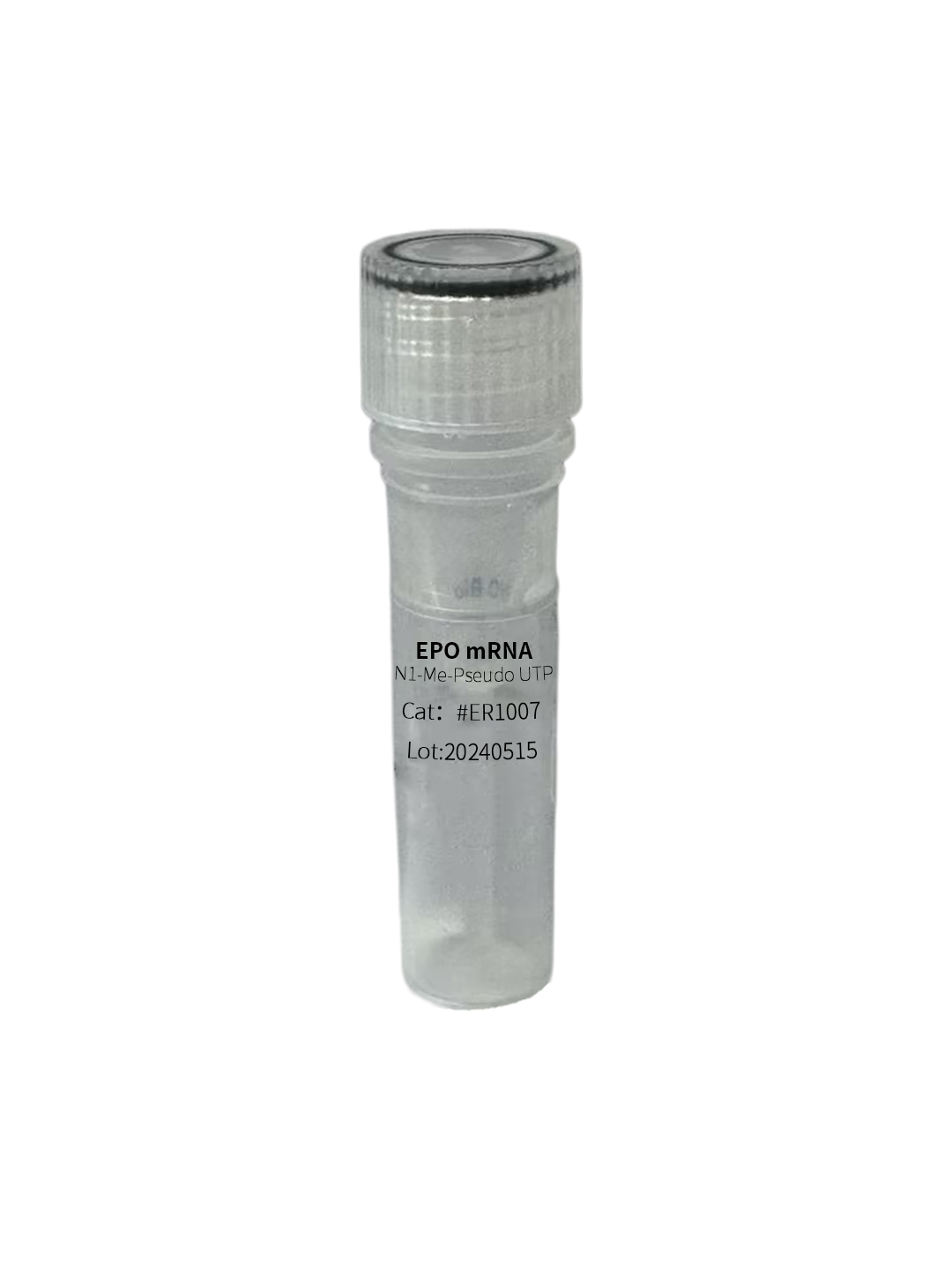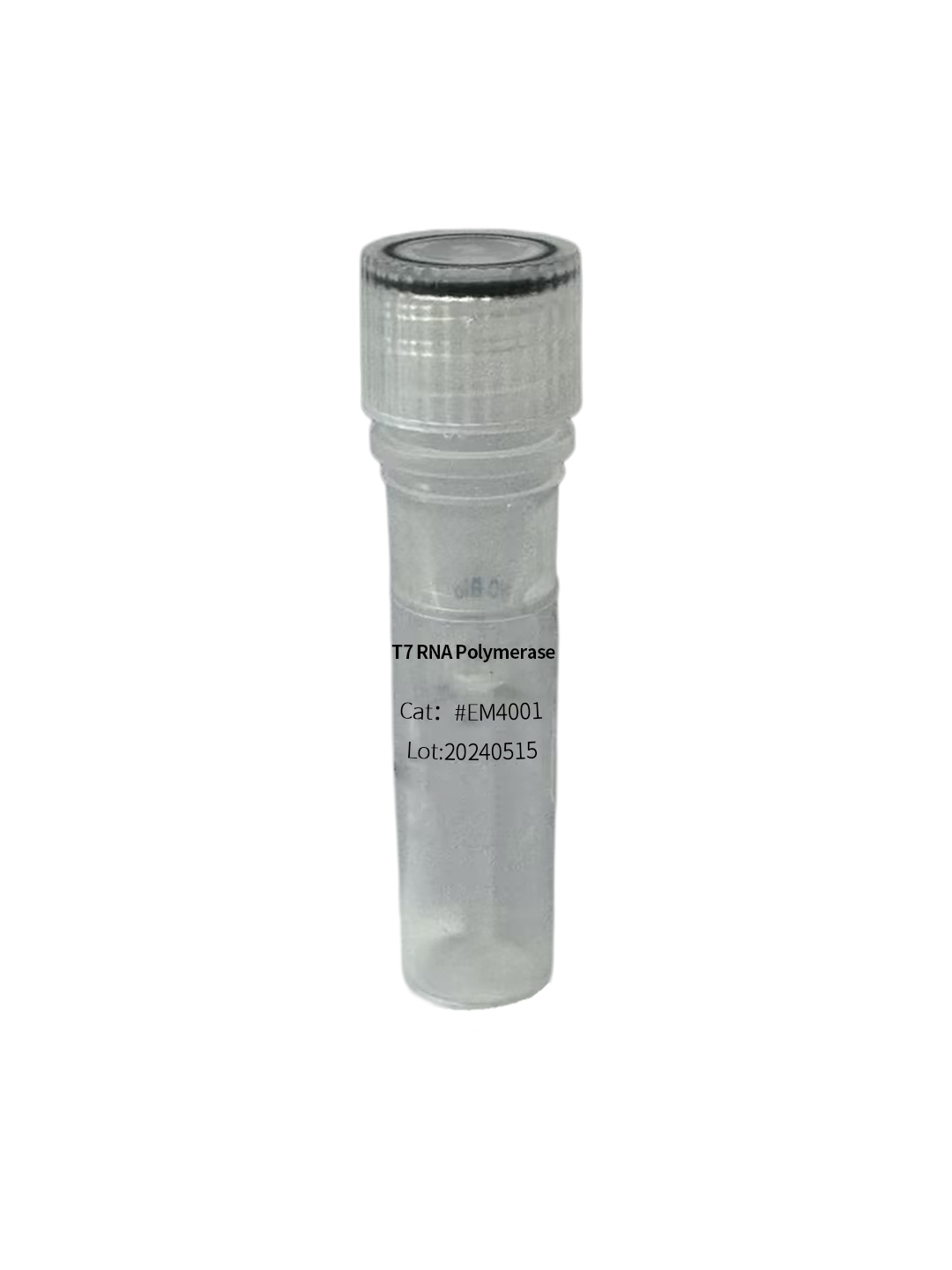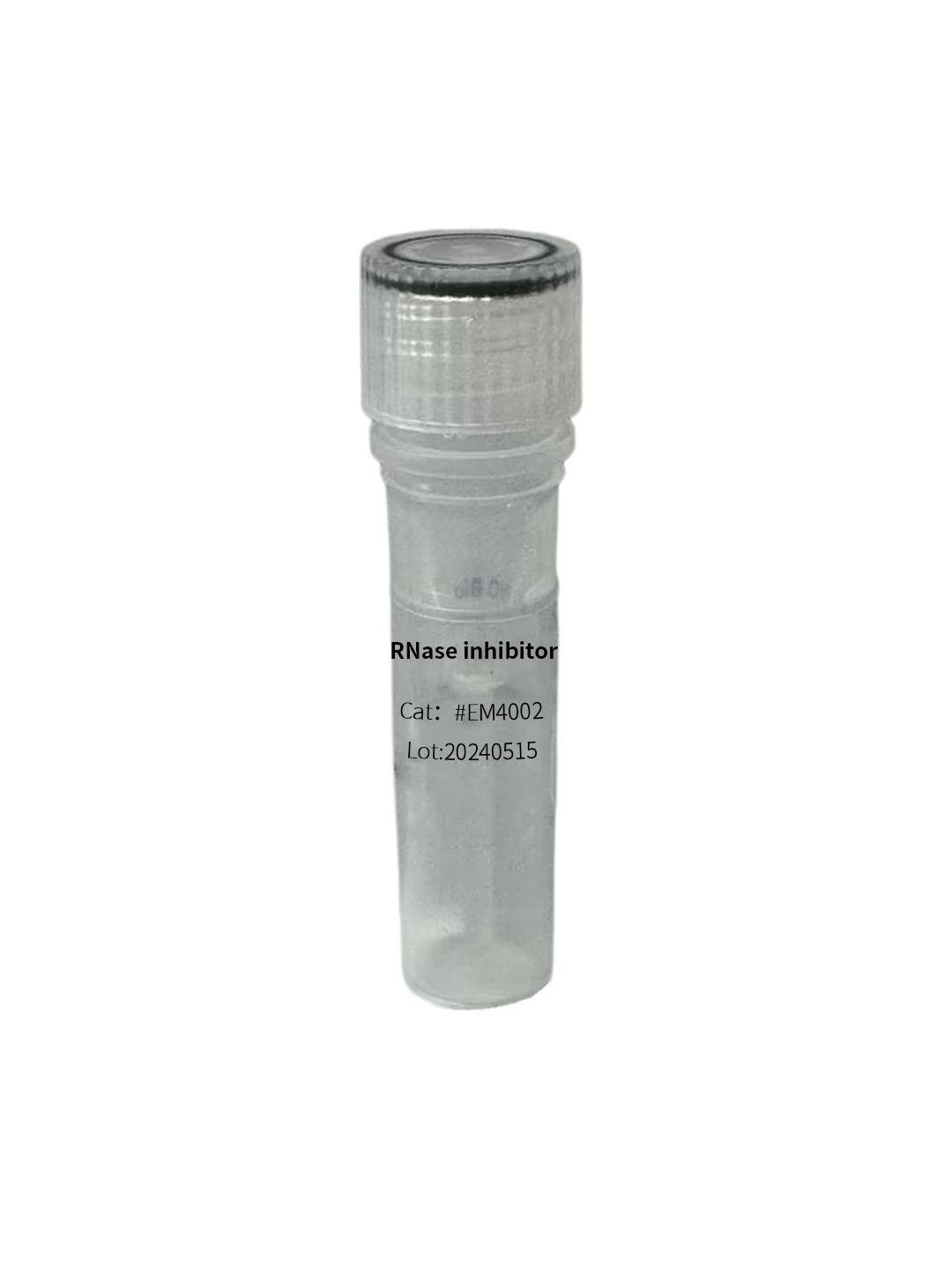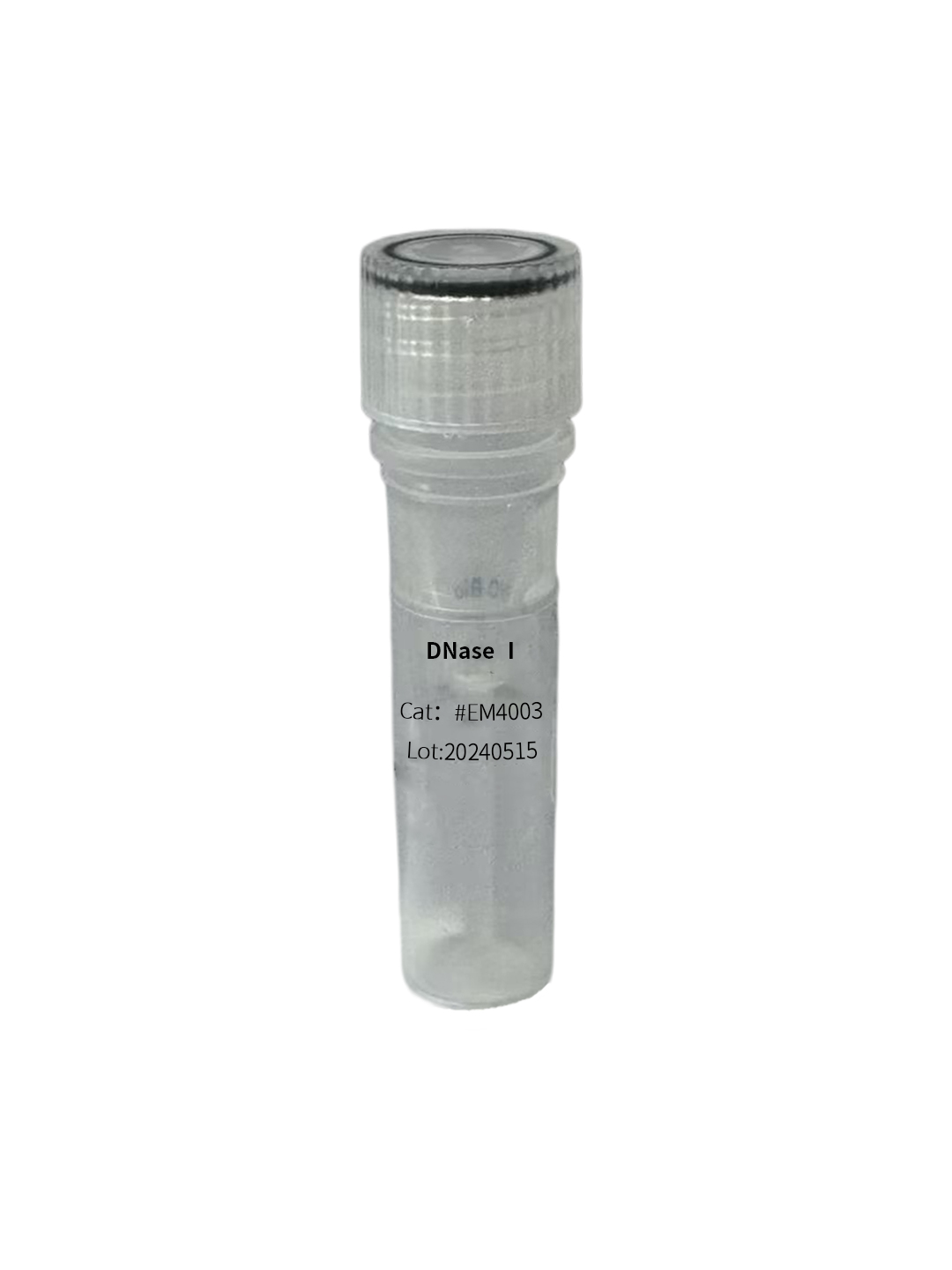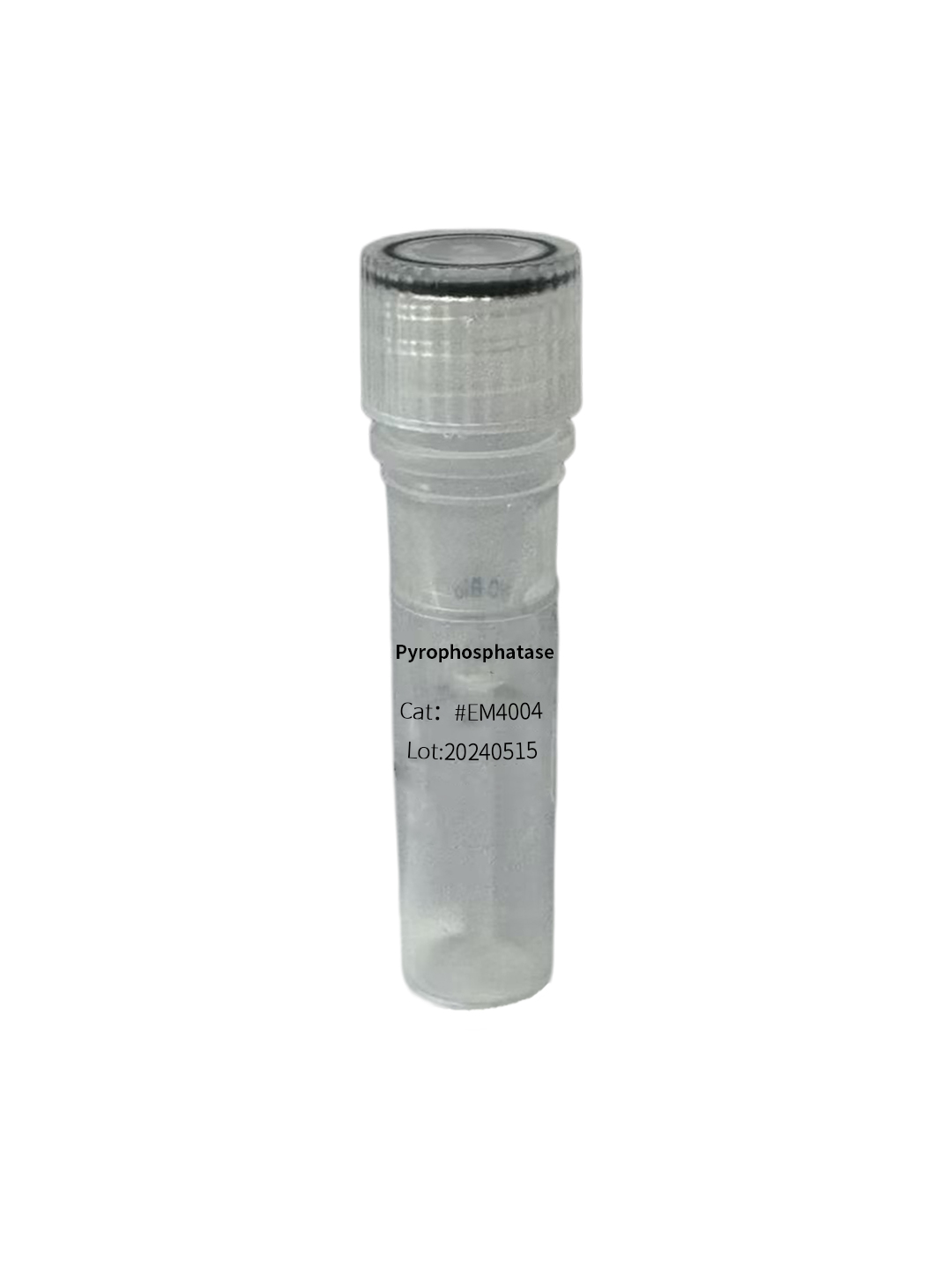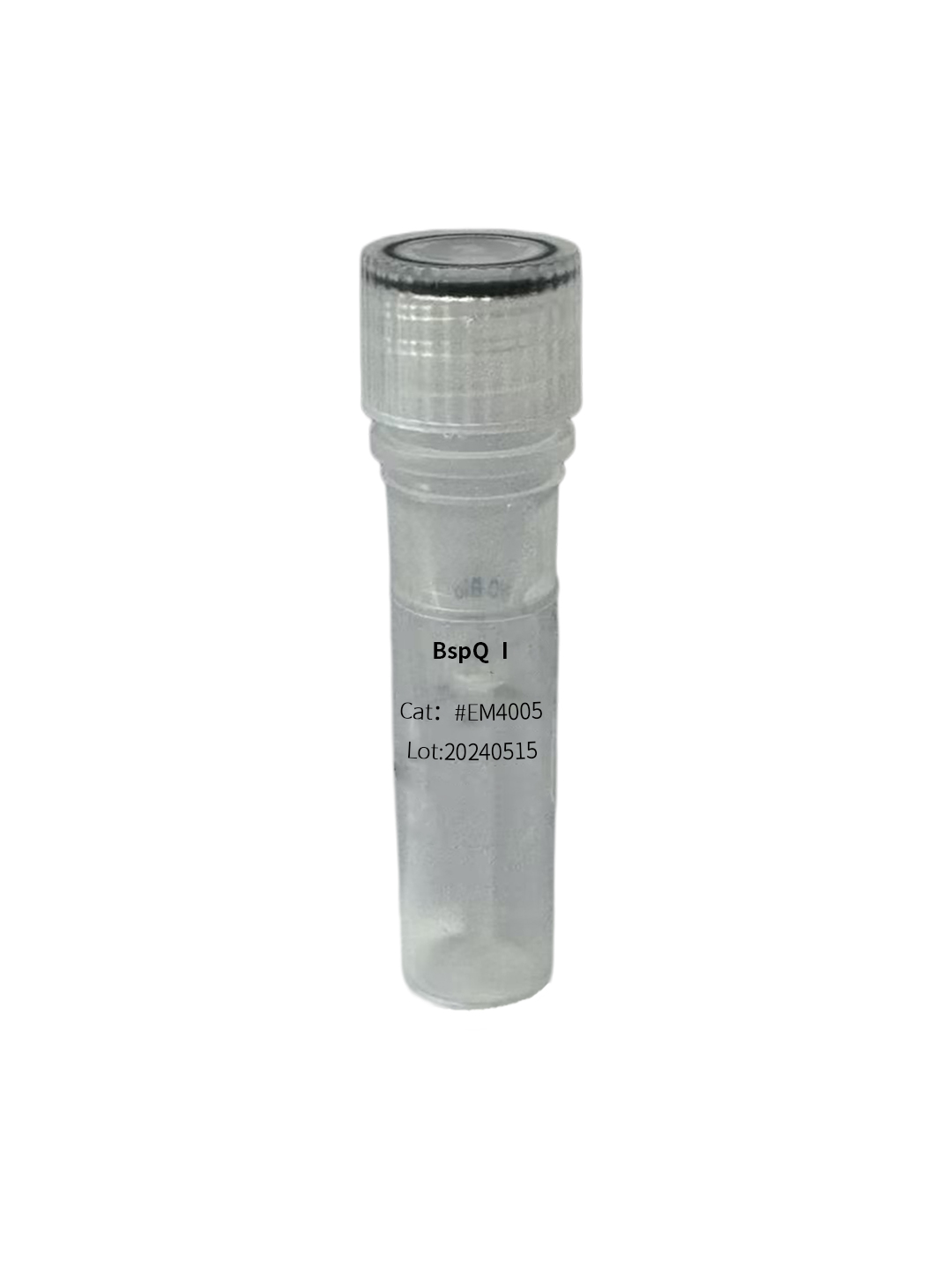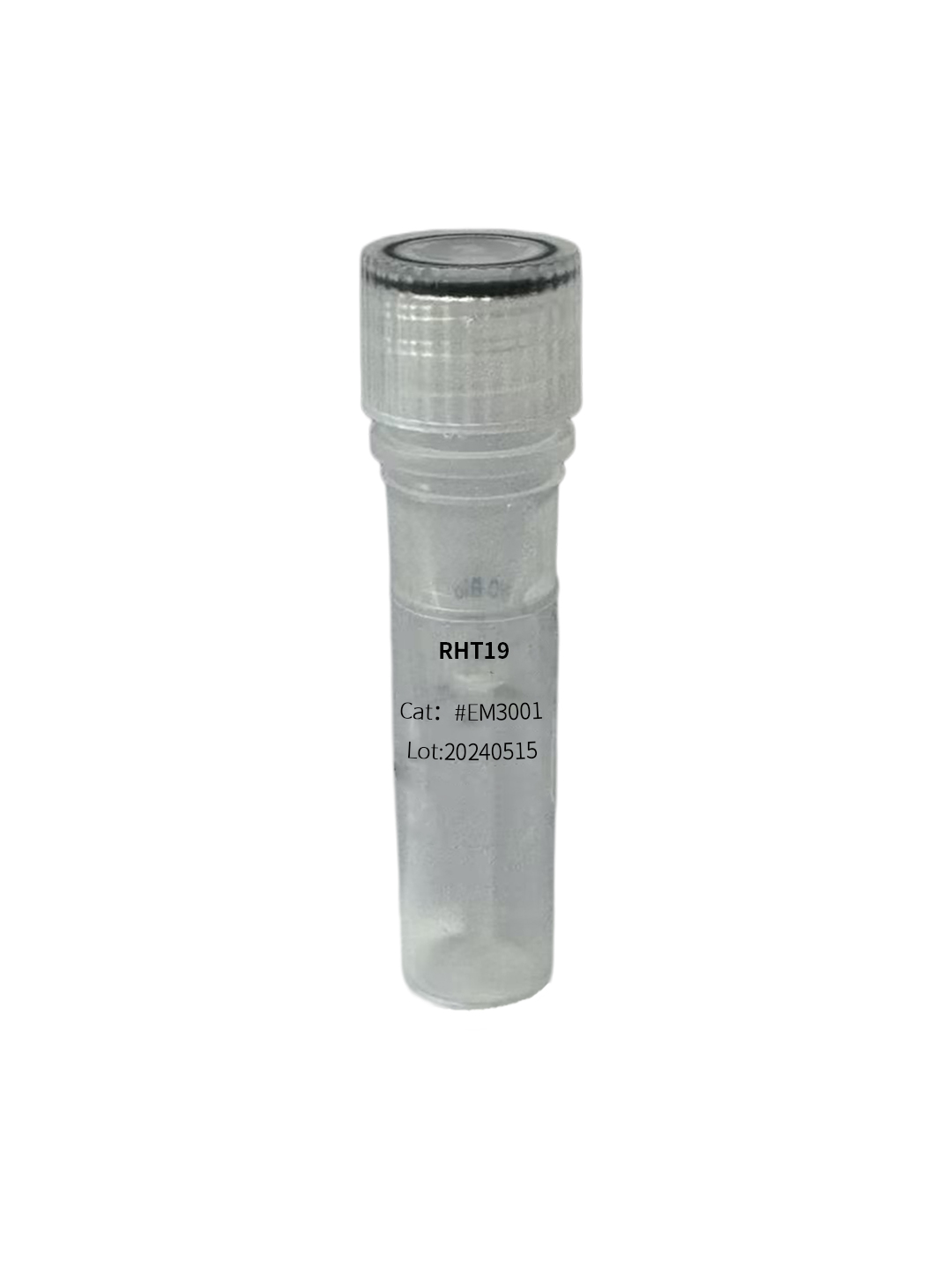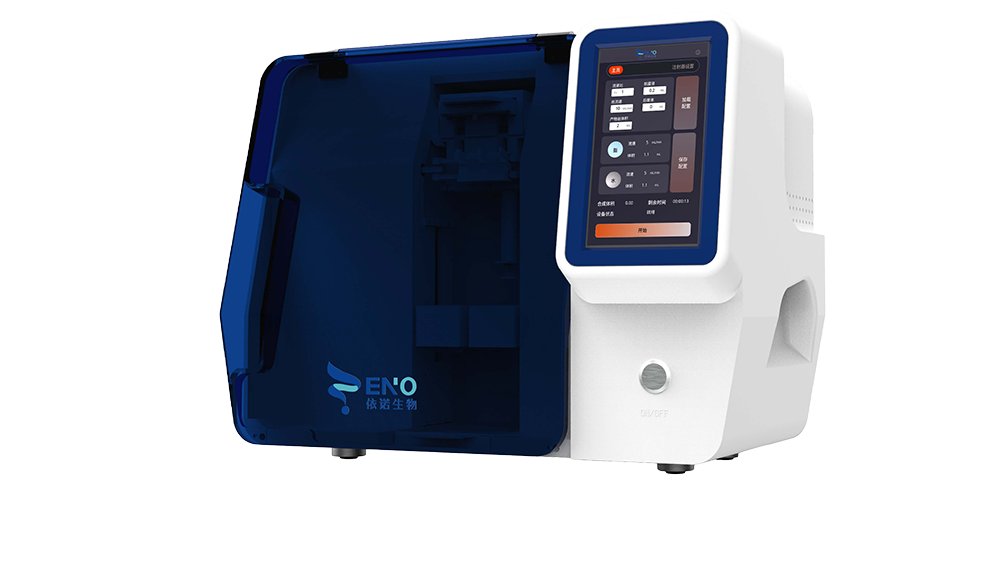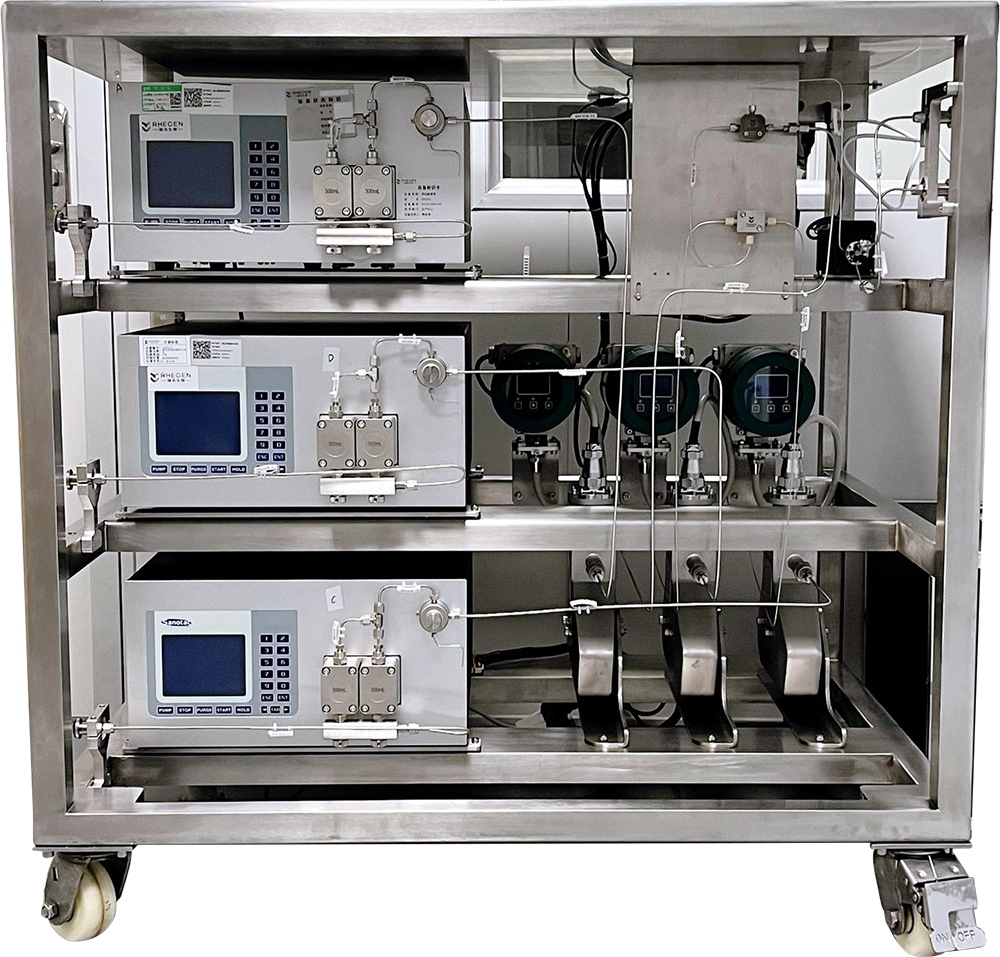Kit products
bootstrap5
mRNA Spot products
eGFP mRNA(N1-Me-Pseudo UTP)
The eGFP protein, short for enhanced green fluorescent protein, is a commonly used reporter molecule. When stimulated by light, it emits a strong and bright green fluorescence with maximum excitation/emission wavelengths of 488 nm/509 nm. By transfecting eGFP mRNA into cells, the cells can express the eGFP protein, allowing for the study of transfection and expression within the cells.
mRNA Spot products
d2eGFP mRNA(N1-Me-Pseudo UTP)
d2eGFP is a modified version of EGFP that enhances protein degradation and reduces half-life without reducing expression intensity. The d2eGFP protein can be used to precisely measure mRNA transcription and gene expression regulation. d2eGFP-mRNA has been generated through in vitro transcription and is already capped at the 5' end and poly A tailed at the 3' end.
mRNA Spot products
d2eGFP mRNA(5-Methoxy UTP)
d2eGFP is a modified version of EGFP that enhances protein degradation and reduces half-life without reducing expression intensity. The d2eGFP protein can be used to precisely measure mRNA transcription and gene expression regulation. d2eGFP-mRNA has been generated through in vitro transcription and is already capped at the 5' end and poly A tailed at the 3' end.
mRNA Spot products
Firefly Luciferase mRNA(N1-Me-Pseudo UTP)
Firefly Luciferase enzyme was initially isolated from the firefly Photinus pyralis and is a commonly used bioluminescent reporter molecule. It is frequently employed in research for gene regulation, cell viability assays, ATP level analysis, and in vivo imaging. After transfecting cells with Firefly Luciferase mRNA, the cells are able to express the Firefly Luciferase protein.
mRNA Spot products
Firefly Luciferase mRNA(5-Methoxy UTP)
Firefly Luciferase enzyme was initially isolated from the firefly Photinus pyralis and is a commonly used bioluminescent reporter molecule. It is frequently employed in research for gene regulation, cell viability assays, ATP level analysis, and in vivo imaging. After transfecting cells with Firefly Luciferase mRNA, the cells are able to express the Firefly Luciferase protein.
mRNA Spot products
EPO mRNA(N1-Me-Pseudo UTP)
The EPO mRNA codes for a hormone called erythropoietin, which controls red blood cell production in mammals. It is mainly produced in the kidneys, with a small amount produced in the liver. Erythropoietin also plays a role in healing brain injuries in wounds. Transfection of EPO mRNA in the body leads to a significant increase in reticulocyte count and hematocrit. This type of protein is also commonly used as an indicator protein to study the efficiency of cellular translation of engulfing proteins.
mRNA Spot products
EPO mRNA(5-Methoxy UTP)
The EPO mRNA codes for a hormone called erythropoietin, which controls red blood cell production in mammals. It is mainly produced in the kidneys, with a small amount produced in the liver. Erythropoietin also plays a role in healing brain injuries in wounds. Transfection of EPO mRNA in the body leads to a significant increase in reticulocyte count and hematocrit. This type of protein is also commonly used as an indicator protein to study the efficiency of cellular translation of engulfing proteins.
mRNA Spot products
GM-CSF mRNA(N1-Me-Pseudo UTP), Mouse
GM-CSF, also known as granulocyte-macrophage colony-stimulating factor, is a protein in mice that stimulates the formation of granulocytes and macrophages from bone marrow precursor cells. It has various physiological functions, primarily promoting the generation, differentiation, activation, and survival of these cells. Additionally, it plays a critical role as a homeostatic factor in the alveoli of the lungs, aiding in the development and long-term maintenance of alveolar macrophages. This mRNA is capped with Cap1 structure and N1-Me-Pseudo UTP modification. The UTR and poly A regions have been optimized with proprietary intellectual property rights to significantly enhance mRNA translation and expression for reduced immunogenicity and cellular toxicity.
mRNA Spot products
GM-CSF mRNA(5-Methoxy UTP), Mouse
GM-CSF, Mouse mRNA expresses GM-CSF protein in mice. GM-CSF is a hematopoietic growth factor that stimulates the formation of granulocytes and macrophages from bone marrow progenitor cells. It has a wide range of physiological functions, mainly promoting the generation, differentiation, activation, and survival of granulocytes and macrophages. It is also a key homeostatic factor in the alveoli of the lungs, involved in the development and long-term maintenance of alveolar macrophages. The Enno spot-type GM-CSF mRNA (5-Methoxy UTP), Mouse uses Cap1 structure and 5-Methoxy UTP modification. The UTR and poly A regions have been optimized with proprietary intellectual property rights to significantly enhance mRNA translation and expression for reduced immunogenicity and cellular toxicity.
core raw materials for mRNA synthesis
Pseudo UTP(sodium salt)
Pseudouridine triphosphate (pUTP) is a commonly used modified nucleotide in molecular biology. It finds various applications, such as in vitro transcription and siRNA synthesis. Studies have shown that mRNA synthesized using pUTP has improved stability, translation efficiency, and reduced immunogenicity, making it widely used in the field of disease research. Our product is a sodium salt solution of pUTP with a purity of≥ 96% (HPLC) and a concentration of 100mM±5mM. It is free from contamination of endonucleases, exonucleases, and ribonucleases.
key raw material for mRNA synthesis
T7 RNA Polymerase
This product is a recombinant source of T7 RNA polymerase from Escherichia coli. It is a DNA-dependent RNA polymerase that specifically recognizes the T7 promoter and synthesizes RNA chains complementary to the downstream template strand. It uses single-stranded or double-stranded DNA templates containing the T7 promoter sequence and NTPs as substrates.
key raw material for mRNA synthesis
RNase inhibitor,Murine
This product is a recombinant mouse RNase inhibitor expressed and purified in E. coli. It can bind to RNase A, RNase B, or RNase C in a non-competitive manner in a 1:1 ratio, thereby inhibiting the activity of these three enzymes and protecting RNA from degradation. The inhibitor is compatible with various commercially available Reverse Transcriptase and DNA Polymerase enzymes. Mouse RNase inhibitor has higher antioxidant activity due to the absence of two cysteine residues in human proteins that are highly sensitive to oxidation, making it more suitable for experiments sensitive to high DTT levels, such as qPCR.
key raw material for mRNA synthesis
DNase I
Dnase I is a type of enzyme that can cleave DNA at phosphodiester bonds, generating DNA fragments with a 5' phosphate group and a 3' hydroxyl group. It can act on both single-stranded and double-stranded DNA, as well as chromatin DNA. The activity of DNase I depends on the presence of Ca2+ and can be activated by Mg2+ or Mn2+. In the presence of Mg2+, it can randomly recognize and cleave DNA at any site. In the presence of Mn2+, it can recognize and cleave DNA at nearly identical sites on both strands, producing DNA fragments with blunt ends or with one or two nucleotides protruding.
key raw material for mRNA synthesis
Inorganic Pyrophosphatase
This product is a recombinant Inorganic Pyrophosphatase derived from E. coli, which can catalyze the hydrolysis of inorganic pyrophosphate into orthophosphate. During transcription, the accumulation of inorganic pyrophosphate generated in the reaction can inhibit the production of transcription products. However, the inorganic pyrophosphatase can hydrolyze the pyrophosphate generated during the reaction, preventing the reaction from being inhibited and increasing the yield of products.
key raw material for mRNA synthesis
BspQ I
This product is a recombinant protein encoded by the BspQ I gene in spherical spore Bacillus subtilis expressed in Escherichia coli. It is a type IIS restriction endonuclease primarily used for cutting plasmids to prepare linear DNA fragments with poly (A/T/G/C) ends, as well as cutting DNA to obtain specific sticky ends. Its recognition sequence and cleavage site are:5'......GCTCTTC(N)......3'3'......CGAGAAG(NNNN)......5'
key raw material for mRNA synthesis
RHT19
RHT19 is a novel ionizable cationic lipid that forms lipid nanoparticles (LNPs) in combination with other lipids, used for delivery in mRNA-based research.
equipment
Liposyn Y
Using advanced microfluidic technology, integrating pressure-driven, flow-monitoring and real-time imaging. Using pressure-driven mobile and dispersed phases, through the flow most sensor, into the microfluidic chip at a set flow rate, under the real-time monitoring of a fast camera to stably prepare highly reproducible and highly monodisperse microspheres and droplets.
equipment
